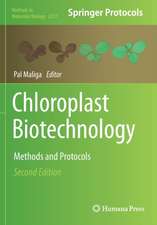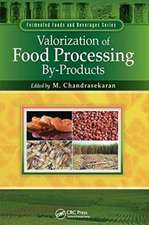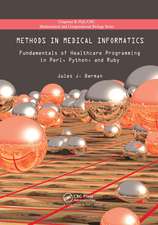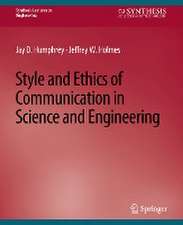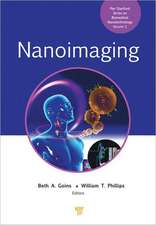Cardiovascular Solid Mechanics: Cells, Tissues, and Organs
Autor Jay D. Humphreyen Limba Engleză Hardback – 8 ian 2002
| Toate formatele și edițiile | Preț | Express |
|---|---|---|
| Paperback (1) | 1012.11 lei 6-8 săpt. | |
| Springer – dec 2010 | 1012.11 lei 6-8 săpt. | |
| Hardback (1) | 972.62 lei 6-8 săpt. | |
| Springer – 8 ian 2002 | 972.62 lei 6-8 săpt. |
Preț: 972.62 lei
Preț vechi: 1186.12 lei
-18% Nou
Puncte Express: 1459
Preț estimativ în valută:
186.13€ • 202.11$ • 156.35£
186.13€ • 202.11$ • 156.35£
Carte tipărită la comandă
Livrare economică 22 aprilie-06 mai
Preluare comenzi: 021 569.72.76
Specificații
ISBN-13: 9780387951683
ISBN-10: 0387951687
Pagini: 758
Ilustrații: XVI, 758 p.
Dimensiuni: 156 x 234 x 40 mm
Greutate: 1.23 kg
Ediția:2002
Editura: Springer
Colecția Springer
Locul publicării:New York, NY, United States
ISBN-10: 0387951687
Pagini: 758
Ilustrații: XVI, 758 p.
Dimensiuni: 156 x 234 x 40 mm
Greutate: 1.23 kg
Ediția:2002
Editura: Springer
Colecția Springer
Locul publicării:New York, NY, United States
Public țintă
GraduateDescriere
The vitality of the cardiovascular system, which consists of the heart, vas culature, and blood, depends on its response to a host of complex stimuli, including biological, chemical, electrical, mechanical, and thermal. The focus of this book, however, is on the response of the heart and arteries to mechanical loads from the perspective of nonlinear solid mechanics. Through my own research in this field, I have come to realize that study ing the complex responses of cardiovascular cells, tissues, and organs nec essarily requires a combined theoretical, experimental, and computational approach. Theory is needed to guide the performance and interpretation of experiments as well as to synthesize the results; experiment is needed to study the responses of the system to well-controlled loads and to test can didate hypotheses and theories; and due to the geometric and material non linearities inherent to cardiovascular mechanics, computation is needed to analyze data as well as to solve boundary and initial value problems that correspond to either experimental or in vivo conditions. One of the primary goals of this book is to introduce together basic analytical, experimental, and computational methods and to illustrate how these methods can and must be integrated to gain a more complete understanding of the bio mechanics of the heart and vasculature. Despite the focus on cardiovascu lar mechanics, the fundamental methods, indeed many of the specific results, are generally applicable to many different soft tissues.
Cuprins
1. INTRODUCTION.1.1 Historical Prelude, 1.2 Basic Cell Biology, 1.3 The Extracellular Matrix, 1.4 Soft Tissue Behavior, 1.5 Needs and General Approach, 1.6 Exercises, 1.7 References.2. MATHEMATICAL PRELIMINARIES2.1 A Direct Tensor Notation, 2.2 Cartesian Components, 2.3 Further Results in Tensor Calculus, 2.4 Orthogonal Curvilinear Components, 2.5 Matrix Methods, 2.6 Exercises, 2.7 References,3. CONTINUUM MECHANICS3.1 Kinematics, 3.2 Forces, Tractions and Stresses, 3.3 Balance Relations, 3.4 Constitutive Formulations, 3.5 Boundary and Initial Conditions, 3.6 Exercises, 3.7 References,4. FINITE ELASTICITY4.1 Introduction, 4.2 Incompressible Isotropic Elasticity, 4.3 Solutions in 3-D Incompressible Elasticity, 4.4 Compressible Isotropic Elasticity, 4.5 Membrane Hyperelasticity, 4.6 Exercises, 4.7 References5. EXPERIMENTAL METHODS5.1 General Philosophy, 5.2 Measurement of Strain, 5.3 Measurement of Applied Loads, 5.4 Testing Conditions, 5.5 Parameter Estimation and Statistics, 5.6 Exercises, 5.7 References6. Finite Element Methods6.1 Fundamental Equations, 6.2 Interpolation, Integration, and Solvers, 6.3 An Illustrative Formulation, 6.4 Inflation of a Membrane, 6.5 Inverse Finite Elements, 6.6 Exercises, 6.7 ReferencesPART II - VASCULAR MECHANICS7. THE NORMAL ARTERIAL WALL7.1 Structure and Function, 7.2 General Characteristics, 7.3 Constitutive Framework, 7.4 Experimental Methods, 7.5 Specific Constitutive Relations, 7.6 Stress Analyses, 7.7 Exercises, 7.8 References8. VASCULAR DISORDERS8.1 Hypertension, 8.2 Intracranial Aneurysms, 8.3 Atherosclerosis, 8.4 Aortic Aneurysms, 8.5 Additional Topics, 8.6 Exercises, 8.7 References9. VASCULAR ADAPTATION9.1 Mechanical Preliminaries, 9.2 Cellular Responses to Applied Loads, 9.3 Arterial Response to Hypertension, 9.4 Arterial Response to Altered Flow, 9.5 Vessel Response to Injury, 9.6 Veins as Arterial Grafts, 9.7 Aging, 9.8 Exercises, 9.9 ReferencesPART III CARDIAC MECHANICS10. THE NORMAL HEART10.1 Structure and Function, 10.2 General Characteristics, 10.3 Constitutive Framework, 10.4 Constitutive Relations, 10.5 Stress Analyses, 10.6 Exercises, 10.7 References11. EPILOGUEAPPENDICESI. Nomenclature, Abbreviations, and ConversionsII. Results for Curvilinear CoordinatesIII. Material Frame Indifference11. CARDIAC DISORDERS11.1 Ischemia 11.2 Volume Overload11.3 Hypertrophy 11.4 Cardiac Aneurysms11.5 Additional Topics







